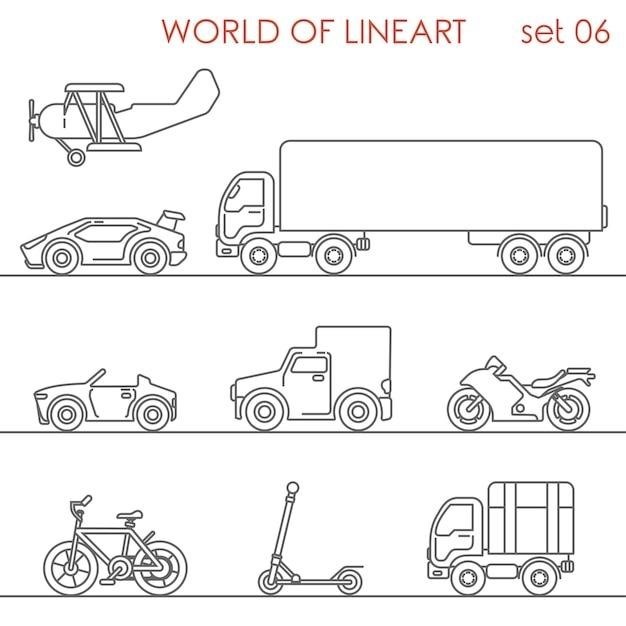Grease equivalent charts are essential tools for lubrication management, providing detailed comparisons of grease types, NLGI grades, and application suitability to ensure optimal performance.
1.1 Definition and Purpose of Grease Equivalent Charts
Grease equivalent charts are detailed reference tools designed to compare and contrast various grease types based on their properties, such as NLGI grades, viscosity, and compatibility. These charts serve as guides for selecting the most suitable grease for specific applications, ensuring optimal lubrication performance. They also help in identifying equivalent products across different manufacturers, facilitating easier substitutions when needed. By standardizing grease classifications, these charts reduce confusion and enable users to make informed decisions, preventing compatibility issues and enhancing equipment reliability. Their primary purpose is to simplify grease selection, ensuring that the chosen product meets the operational demands of the intended application effectively.
1.2 Importance of Grease in Lubrication
Grease plays a critical role in lubrication by reducing friction between moving parts, preventing wear and tear, and protecting equipment from corrosion. It acts as a sealant, preventing contaminants like dust and moisture from entering machinery, which can cause premature failure. Unlike liquid lubricants, grease adheres to surfaces, providing continuous protection even in harsh conditions. Proper grease application ensures smooth operation, reduces maintenance costs, and extends the lifespan of machinery. Its versatility makes it indispensable in various industries, from automotive to manufacturing, where consistent performance and reliability are paramount. Effective lubrication with grease is essential for maintaining operational efficiency and safety standards.
1.3 Overview of Grease Types and Their Applications
Grease types vary based on thickeners and base oils, catering to specific applications. Lithium-based greases are versatile, commonly used in automotive and industrial settings. Synthetic greases offer superior performance in extreme temperatures and high-load conditions, ideal for aerospace and marine applications. Calcium-based greases are often used in construction and heavy machinery, while sodium-based greases excel in high-temperature environments. Each type has unique properties suited for particular industries, ensuring optimal lubrication and protection. Grease equivalent charts help in selecting the right grease by comparing their specifications, ensuring compatibility and performance across various machinery and operational demands, which is crucial for maintaining efficiency and longevity.

Types of Grease and Their Characteristics
Grease types include lithium-based, synthetic, calcium-based, and sodium-based, each offering unique properties like consistency, temperature range, and load-bearing capacity, tailored for specific industrial and automotive applications.
2.1 Lithium-Based Grease
Lithium-based grease is a versatile and widely used lubricant, known for its excellent thermal stability and water resistance. It is compatible with a range of NLGI grades, making it suitable for both automotive and industrial applications. This grease is often recommended for use in bearings, gears, and chassis points due to its ability to withstand moderate loads and temperatures. It is also compatible with most seal materials, ensuring long-lasting protection against wear and corrosion. Lithium-based greases are commonly used in the automotive industry for wheel bearings and suspension systems, as well as in light industrial machinery. They are a reliable choice for general-purpose lubrication needs.
2.2 Synthetic Grease
Synthetic grease offers superior performance in extreme conditions, providing excellent high-temperature stability, oxidation resistance, and low-temperature fluidity. It is ideal for applications where conventional greases fail, such as in high-speed machinery, aerospace, and marine environments. Synthetic greases are formulated with advanced base oils and additives, making them resistant to degradation and contamination. They are commonly used in heavy-duty industrial settings, including gears, bearings, and hydraulic systems. Synthetic greases also excel in applications requiring minimal maintenance, as they have a longer service life compared to traditional greases. Their higher cost is offset by improved durability and reduced downtime in critical operations.
2.3 Calcium-Based Grease
Calcium-based grease is a traditional and widely used lubricant, known for its excellent water resistance and stability in wet environments. It is often applied in marine, construction, and heavy-duty industrial settings where moisture is prevalent. Calcium-based greases typically have a NLGI grade of 1 or 2, making them suitable for applications requiring moderate consistency. They are commonly used in wheel bearings, chassis, and other automotive components. While they perform well in low-to-moderate temperatures, they may soften at high temperatures, limiting their use in extreme heat applications. Their compatibility with other grease types varies, so careful selection is essential for optimal performance.
2.4 Sodium-Based Grease
Sodium-based grease is a versatile and widely used lubricant, known for its exceptional thermal stability and high-temperature performance. It is commonly applied in industrial machinery, automotive components, and high-temperature environments where consistent lubrication is critical. Sodium-based greases typically have a NLGI grade ranging from 1 to 3, offering a balance between fluidity and structural integrity. They are particularly effective in applications such as bearings, gears, and hydraulic systems. Their compatibility with other grease types is moderate, but they are often preferred for their durability and resistance to oxidation. Sodium-based greases are a reliable choice for demanding operational conditions, ensuring long-lasting lubrication and minimal wear.

NLGI Grades and Their Significance
NLGI grades classify grease consistency, ensuring proper lubrication for specific applications. Higher grades indicate thicker grease, while lower grades are more fluid, optimizing performance and longevity in machinery.
3.1 Understanding NLGI Grades
NLGI (National Lubricating Grease Institute) grades define the consistency of grease, ranging from 000 to 6. Lower grades are more fluid, suitable for low-temperature applications, while higher grades are thicker, ideal for high-temperature and heavy-duty use. This classification helps in selecting the appropriate grease for specific machinery needs, ensuring optimal performance and longevity. By understanding NLGI grades, users can make informed decisions to match grease characteristics with application requirements, enhancing efficiency and reducing wear. Proper grade selection is crucial for effective lubrication in various industries, from automotive to industrial machinery.
3.2 NLGI 1 and 2 for Automotive Applications
NLGI 1 and 2 grades are widely used in automotive applications due to their balanced consistency, which suits most vehicle lubrication needs. NLGI 1 is ideal for low to moderate temperatures and applications requiring easier pumping, such as in centralized lubrication systems. NLGI 2, being slightly thicker, is the standard for wheel bearings, chassis, and other components exposed to higher loads and temperatures. These grades ensure long-lasting protection against wear and corrosion, making them indispensable in the automotive industry. Their versatility and effectiveness make NLGI 1 and 2 the go-to choices for maintaining smooth vehicle operation under various driving conditions.

3.3 NLGI 0 and 00 for Heavy-Duty Applications
NLGI 0 and 00 grades are designed for heavy-duty applications requiring exceptional lubrication in extreme conditions. These soft, buttery greases are ideal for large, slow-moving equipment and construction machinery. NLGI 0 is slightly thicker than NLGI 00, offering better staying power in high-load environments. Both grades excel in low-temperature scenarios, ensuring consistent lubrication even in cold climates. Their high-temperature stability and resistance to water washout make them perfect for demanding industrial and agricultural uses. Always consult grease equivalent charts to ensure compatibility with specific applications, as improper selection can lead to reduced equipment performance and lifespan.

Grease Compatibility and Interchangeability
Grease compatibility is crucial for ensuring proper lubrication and preventing equipment failure. Using incompatible greases can lead to degraded performance, corrosion, and premature wear. Always refer to charts for safe substitutions.
4.1 Compatibility of Different Grease Types
Grease compatibility refers to the ability of different grease types to work together without causing degradation or separation. Lithium-based and calcium-based greases are generally incompatible, as they can react and form insoluble compounds. Synthetic greases, like polyurea or silicone-based, often require specific compatibility checks. Mixing incompatible greases can lead to reduced lubricating properties, corrosion, or equipment failure. Always consult grease equivalent charts to ensure compatibility before switching or combining grease types. Proper compatibility ensures optimal lubrication, extends equipment life, and prevents costly downtime. Incompatible greases can compromise performance, making compatibility a critical factor in industrial and automotive applications.
4.2 Risks of Using Incompatible Greases
Using incompatible greases can lead to premature equipment failure, increased wear, and reduced lubrication performance. Incompatible greases may separate, soften, or break down, compromising their protective properties. This can result in metal-to-metal contact, overheating, and accelerated component degradation. In severe cases, incompatible greases can contaminate lubrication systems, requiring costly cleaning or replacement. Additionally, mixing incompatible greases may void warranties or lead to safety hazards, particularly in high-stress applications like heavy machinery or automotive systems. Always consult grease equivalent charts to avoid such risks and ensure seamless compatibility for optimal performance and longevity of equipment.
4.3 How to Ensure Proper Grease Compatibility
To ensure proper grease compatibility, always consult grease equivalent charts and manufacturer guidelines. Verify the base oil type, thickener, and additives to avoid chemical incompatibilities. Check NLGI grades for consistency and application suitability. Avoid mixing greases without confirmation of compatibility. Perform compatibility tests in controlled environments before full-scale use. Proper application techniques, such as purging old grease and using clean tools, are essential. Regularly monitor equipment performance after grease changes to detect potential issues early. Adhering to these steps ensures optimal lubrication, prevents premature wear, and maintains equipment reliability across various industrial and automotive applications.

Grease Conversion Charts and Their Uses
Grease conversion charts are vital tools for comparing grease types, ensuring compatibility, and selecting suitable alternatives. They guide lubrication decisions, optimizing performance across industrial and automotive applications.
5.1 Conversion Charts for Lubrication Applications
Conversion charts for lubrication applications are essential tools for comparing grease types, ensuring compatibility, and selecting suitable alternatives. They provide detailed information on grease properties, such as viscosity, NLGI grades, and base oils, helping users identify equivalent products across brands. These charts are particularly useful in industrial and automotive settings, where specific lubrication requirements must be met. By standardizing grease specifications, conversion charts prevent compatibility issues that could lead to equipment failure. They also assist in streamlining maintenance and procurement processes, ensuring optimal performance and longevity of machinery. Regularly updated charts reflect industry advancements, making them indispensable for modern lubrication management.
5.2 How to Read and Interpret Grease Conversion Charts
Reading and interpreting grease conversion charts requires understanding their structure and symbols. These charts typically compare grease types, NLGI grades, and viscosity levels, ensuring compatibility across brands. Start by identifying the axes, which often represent different grease properties. Look for color-coded sections or tables that highlight equivalent products. Pay attention to footnotes or legends that explain abbreviations or specific conditions. By aligning your application requirements with the chart’s data, you can select the most suitable grease. Proper interpretation prevents mismatches, ensuring optimal lubrication and equipment performance. Always refer to the latest version of the chart, as updates reflect industry advancements and new products.
5.3 Common Mistakes in Using Conversion Charts
One common mistake is assuming all grease types are interchangeable without consulting charts. Users often overlook compatibility, leading to equipment damage. Another error is ignoring NLGI grades, as improper viscosity can compromise performance. Some misinterpret equivalency, applying the wrong grease for specific temperatures or loads. Additionally, not considering environmental factors or manufacturer recommendations can lead to poor lubrication. Proper use requires cross-referencing with application requirements and understanding that charts are general guides, not absolute solutions. Always verify with the manufacturer’s specifications to avoid costly errors and ensure optimal lubrication performance.

Applications of Grease in Various Industries
Grease is essential for effective lubrication across industries. Common applications include automotive, industrial machinery, marine, aerospace, and agricultural sectors, ensuring smooth operation and reducing wear and tear.
6.1 Automotive Industry Applications
Grease plays a critical role in the automotive industry, primarily used in wheel bearings, chassis, and suspension systems. Lithium-based greases, such as NLGI Grade 1 or 2, are commonly recommended for automotive applications due to their excellent lubricating properties and durability under varying temperatures. These greases help reduce friction, prevent wear, and protect moving parts from corrosion. Proper grease application ensures smooth vehicle operation, enhances safety, and extends component lifespan. Using grease equivalent charts allows technicians to select the most suitable product for specific automotive needs, ensuring optimal performance and longevity of vehicles.
6.2 Industrial Machinery and Manufacturing
In industrial machinery and manufacturing, grease is indispensable for ensuring smooth operation and longevity of equipment. Bearings, gears, and hydraulic systems rely heavily on grease to reduce friction and prevent wear; The consistent use of suitable grease types, as indicated by grease equivalent charts, is crucial for maintaining production efficiency. Different industrial applications require specific grease properties, such as high-temperature resistance or extreme pressure performance. Proper grease selection and application help minimize downtime, reduce maintenance costs, and extend equipment lifespan. Grease equivalent charts are invaluable for identifying the most appropriate products for various industrial needs, ensuring optimal performance and reliability in manufacturing processes.
6.3 Marine and Aerospace Applications
Grease plays a critical role in marine and aerospace industries, where extreme conditions demand high-performance lubricants. In marine applications, grease is used in propeller shafts, winches, and deck equipment, requiring resistance to water and corrosion. Aerospace applications, such as aircraft landing gears and hydraulic systems, need grease with exceptional thermal stability and load-bearing capacity. Grease equivalent charts help specify the right products for these unique environments. For instance, lithium-based greases are often preferred in marine settings, while synthetic greases are common in aerospace due to their superior performance at high temperatures. Proper grease selection ensures safety, reliability, and optimal functionality in these critical fields.
6.4 Agricultural Equipment and Heavy Machinery
Grease is indispensable in agricultural equipment and heavy machinery, where it lubricates moving parts under harsh conditions. Tractors, harvesters, and heavy-duty machinery rely on greases with high load-bearing capacity and weather resistance. Lithium-based greases are commonly used due to their versatility and durability in outdoor environments. NLGI 2 grade is often recommended for agricultural applications, ensuring optimal lubrication in varying temperatures. Proper grease selection prevents wear, reduces downtime, and extends equipment life. Regular maintenance, including grease reapplication, is crucial for maintaining productivity in farming and construction operations. Grease equivalent charts help farmers and operators choose the right lubricants for their specific needs.

Grease Maintenance and Reapplication Guidelines
Regular grease inspections and reapplication ensure optimal lubrication, prevent wear, and extend equipment life. Follow manufacturer guidelines for frequency, using appropriate tools like grease guns for precise application.
7.1 Frequency of Grease Reapplication
The frequency of grease reapplication depends on factors like equipment type, operating conditions, and environmental elements. High-temperature environments may require more frequent reapplication to prevent degradation. In industrial settings, reapplication intervals are often specified by manufacturers to ensure optimal performance and prevent wear. For automotive applications, NLGI grades like 1 or 2 are commonly recommended, with reapplication needed every 12,000 to 15,000 miles. In heavy-duty machinery, more viscous greases may be used, requiring reapplication every 500 to 1,000 hours of operation. Always consult the grease equivalent chart and manufacturer guidelines for precise recommendations tailored to specific use cases.
7.2 Proper Techniques for Applying Grease
Proper grease application involves using the right tools and following specific methods. Begin by cleaning the lubrication point to remove dirt and old grease, ensuring optimal adhesion. Use a grease gun or manual pump to apply the recommended NLGI grade, checking the grease equivalent chart for compatibility. For bearings, apply a small amount and spin the bearing to distribute evenly. Avoid over-greasing, as it can lead to increased heat and wear. Always refer to manufacturer guidelines for specific techniques tailored to the equipment and operating conditions. Proper application ensures efficient lubrication, prolongs equipment life, and prevents premature failure.
7.3 Tools and Equipment for Grease Application
Essential tools for grease application include grease guns, manual or pneumatic, designed to dispense precise amounts. Grease nipples or fittings are used to inject grease into bearings or moving parts. A grease zerk is another common fitting type. Cleaning cloths and solvents are necessary to remove old grease and contaminants. For large-scale applications, pneumatic grease pumps or centralized lubrication systems are employed. Always ensure tools are compatible with the grease type and NLGI grade. Proper maintenance of equipment, like cleaning grease guns, prevents contamination. Using the right tools ensures efficient application, reduces waste, and extends equipment lifespan.

Environmental and Safety Considerations
Grease use impacts the environment and requires safe handling. Proper disposal and recycling prevent ecological harm. Always follow safety guidelines to minimize risks during application and storage.
8.1 Environmental Impact of Grease Use
The environmental impact of grease use is significant, as improper disposal can contaminate soil and water systems. Many greases contain harmful additives that persist in ecosystems. Biodegradability varies among grease types, with synthetic greases often posing higher risks. Spills or leaks can disrupt marine life and soil health. Proper disposal and recycling are critical to mitigate these effects. Using eco-friendly grease formulations and adhering to regulations can reduce environmental harm. Always follow local guidelines for grease disposal to protect natural resources and promote sustainability.
8.2 Safety Precautions When Handling Grease
Handling grease requires strict safety measures to avoid accidents and health risks. Always wear protective gear, including gloves and eye protection, to prevent skin and eye irritation. Inhaling grease fumes can be harmful, so work in well-ventilated areas. Avoid prolonged skin contact, as some greases may cause allergic reactions. Wash hands thoroughly with soap after handling. Keep grease away from open flames or hot surfaces to prevent fires. Properly dispose of used grease and rags to avoid environmental contamination. Follow manufacturer guidelines for safe handling and storage. Ensuring safety protects both the handler and the environment from potential hazards.
8.3 Disposal and Recycling of Used Grease
Proper disposal and recycling of used grease are crucial to prevent environmental contamination. Never dispose of grease down drains, as it can clog pipes and harm ecosystems. Instead, collect used grease in sealed, leak-proof containers and take it to designated recycling facilities. Many centers accept used grease for processing into biofuels or other products. Always follow local regulations and guidelines for grease disposal. Improper disposal can lead to hefty fines and environmental damage. Recycling not only reduces waste but also supports sustainable practices. Ensure containers are properly labeled and stored to prevent spills or contamination during transport.

Tools and Resources for Grease Selection
Online grease equivalent charts and tables provide vital data for selecting the right grease. Software tools offer advanced lubrication management, while manufacturer guidelines ensure optimal grease performance and compatibility.
9.1 Online Grease Equivalent Charts and Tables
Online grease equivalent charts and tables are invaluable resources for lubrication professionals. These tools provide detailed comparisons of grease types, NLGI grades, and compatibility, ensuring optimal grease selection for specific applications. They often include cross-referencing features, allowing users to match greases from different manufacturers. Many charts are available in PDF formats for easy downloading and referencing. Advanced tools, such as SKF’s Knowledge Engineering app, offer interactive grease selection guides, enabling precise calculations and recommendations. These resources are essential for maintaining equipment efficiency and avoiding compatibility issues, making them indispensable for industries relying on high-performance lubrication solutions.
9.2 Software for Lubrication Management
Software for lubrication management is a powerful tool for optimizing grease selection and application. These programs often include databases of grease types, NLGI grades, and compatibility charts, enabling precise matching of greases to specific applications. Advanced features may include calculators for reapplication intervals and tools for tracking lubrication schedules. Some software, like SKF’s Knowledge Engineering app, offers interactive guides for grease selection, ensuring compatibility and performance. These digital solutions help maintenance teams streamline processes, reduce errors, and extend equipment lifespan. By leveraging lubrication management software, industries can achieve higher efficiency and reliability in their operations, making it a vital resource for modern maintenance practices.
9.3 Manufacturer Guidelines and Recommendations
Manufacturer guidelines and recommendations are critical resources for selecting and applying grease effectively. These documents provide detailed specifications, application amounts, and reapplication intervals tailored to specific equipment and operating conditions. They often include grease equivalent charts, ensuring compatibility and performance across different grease types and viscosity grades. Adhering to these guidelines helps maintain optimal lubrication, preventing equipment damage and extending lifespan. Manufacturers also outline safety precautions and disposal methods, promoting environmentally responsible practices. By following these recommendations, maintenance teams can ensure reliability, efficiency, and cost-effectiveness in their lubrication strategies, making manufacturer guidelines indispensable for industries relying on grease for smooth operations and durability.
Grease equivalent charts remain vital for efficient lubrication management. Future trends include advancements in synthetic grease technology and eco-friendly formulations, enhancing performance and sustainability across industries globally.
10.1 Summary of Key Points
Grease equivalent charts are invaluable for streamlining lubrication processes, ensuring compatibility, and optimizing performance across various industries. They provide detailed comparisons of grease types, NLGI grades, and application suitability, aiding in informed decision-making. By understanding grease characteristics, such as lithium-based, synthetic, and calcium-based greases, users can select the best products for their needs. Compatibility and proper application techniques are emphasized to avoid risks associated with improper grease use. Regular maintenance and reapplication guidelines ensure equipment longevity. Environmental and safety considerations, such as proper disposal and handling, are also highlighted. These charts serve as essential resources for industries seeking efficiency, sustainability, and reliability in lubrication management.
10.2 Emerging Trends in Grease Technology
Emerging trends in grease technology focus on sustainability and innovation, with biodegradable and eco-friendly greases gaining prominence. Synthetic greases with enhanced thermal stability and wear resistance are being developed for high-performance applications. Advanced additives improve lubricity and longevity, reducing maintenance needs. Digital tools, such as grease equivalent charts in PDF formats, enable easier comparison and selection. Additionally, the integration of IoT and smart lubrication systems optimizes grease application, reducing waste and improving efficiency. These advancements cater to industries prioritizing environmental responsibility, cost-effectiveness, and advanced performance, ensuring greases meet future demands across automotive, industrial, and heavy-duty sectors.
10.3 Importance of Staying Informed About Grease Equivalent Charts
Staying informed about grease equivalent charts is crucial for ensuring optimal lubrication and avoiding compatibility issues. As lubrication needs evolve, new grease types and technologies emerge, making it essential to stay updated. Incorrect grease selection can lead to equipment failure, downtime, and increased maintenance costs. By understanding grease equivalent charts, professionals can make informed decisions, ensuring compatibility and performance. Additionally, these charts help in identifying environmentally friendly options, aligning with sustainability goals. Regularly updating knowledge on grease equivalents ensures adherence to industry standards and prevents potential operational risks, ultimately enhancing efficiency and prolonging equipment lifespan in various industrial applications.


